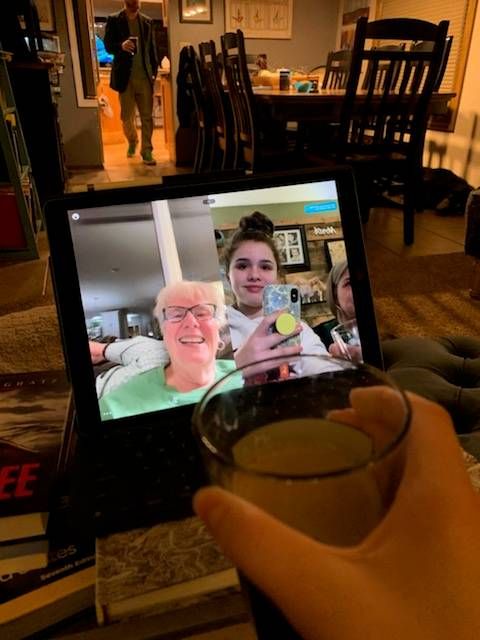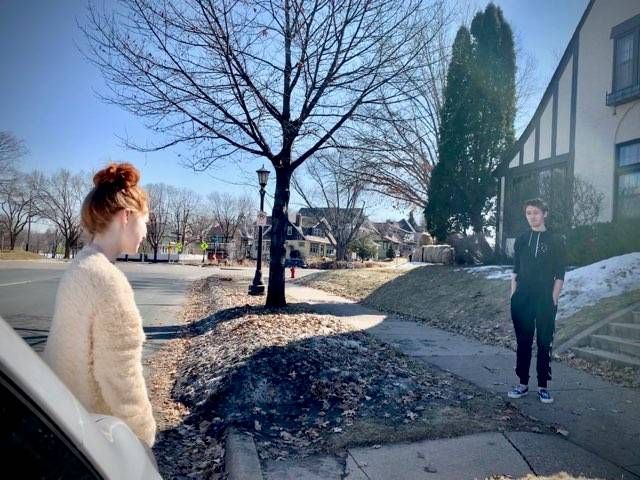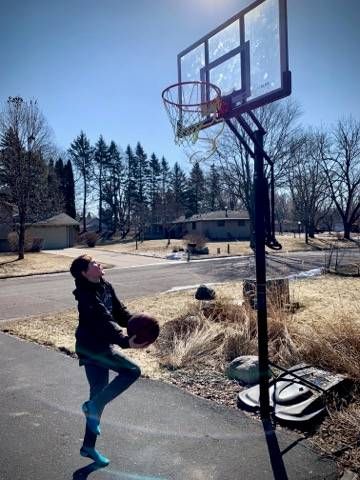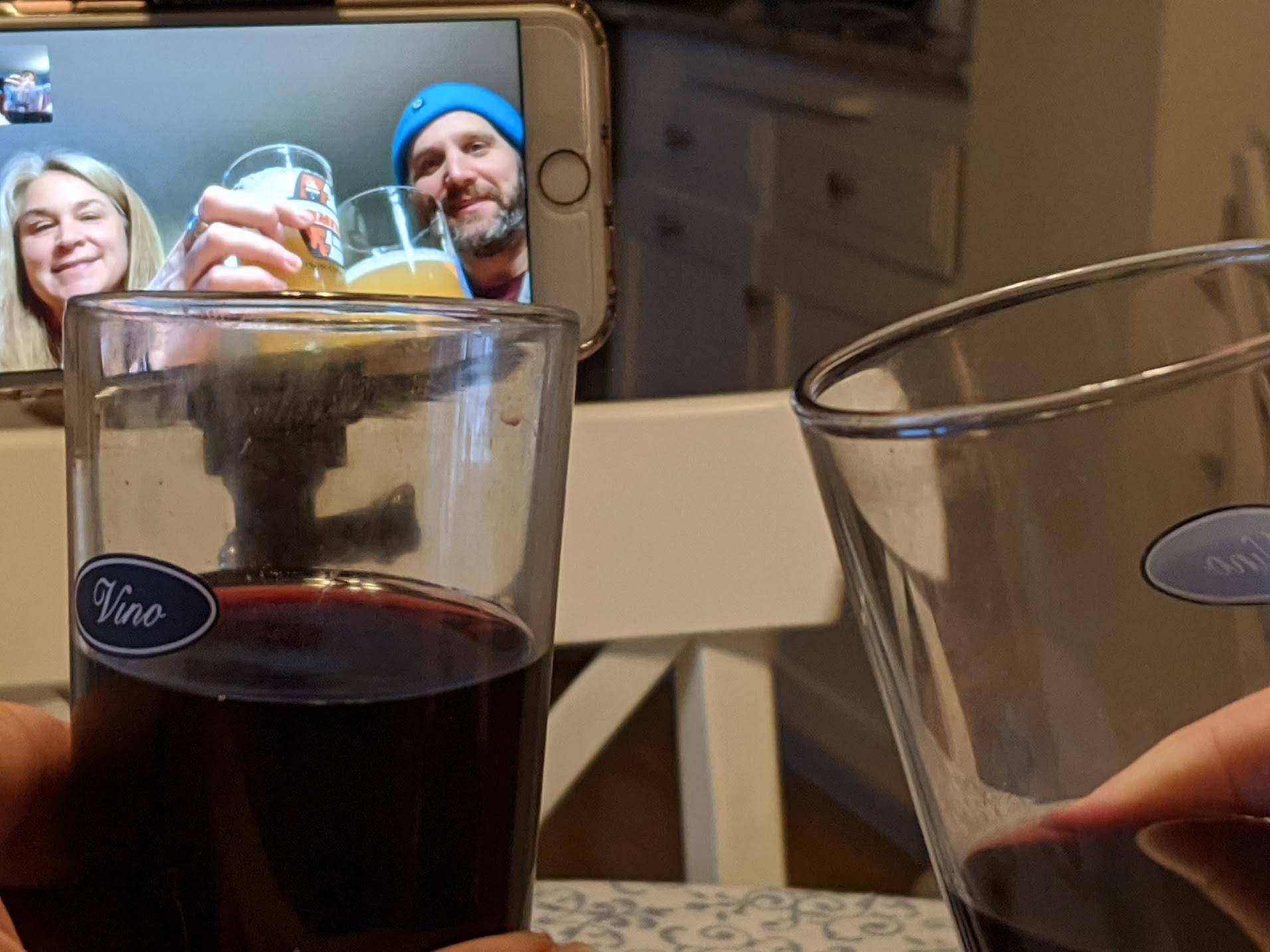Alone Together: Navigating the First Days of At-Home Quarantine
Do you remember the shape of your life just two weeks ago? Do you find yourself noticing how strange it seems to see people congregate in public while watching your favorite drama on television?
Sure enough, life was remarkably different just days ago.
As the COVID-19 pandemic takes hold in Minnesota, across the United States and throughout the world, social distancing has become the norm for many of us. For others, like a Minnesota family of five, being quarantined in their home is the norm. Shelley, Matt and their three children have recently returned from their long-planned vacation to Europe, including three days in Paris. Due to the nature of the COVID-19 spread in Paris, the family has been instructed to self-quarantine for 14 days.
At the time of this interview, conducted over a video-conference line, the family was three days into their two weeks of being alone together.
This is the second installment in a series of updates from a Minnesota family experiencing the unknown: two weeks of at-home quarantine after returning from a trip to Europe. We’ll be regularly checking in with the family as they navigate their new normal of living “alone together.” Discover how they navigated the prospect of quarantine when they first landed in Minnesota in the first installment, "Alone Together: Coming Home from Paris in the Age of COVID-19."
TAKING TEMPS TWICE DAILY
At the root of the quarantine is the need to maintain the family's and their community's health. They've also been instructed to record their temperatures twice each day, which serves as an alert in case someone is infected. If one of them experiences a body temperature of 100.4 degrees or higher, then it's time to call a healthcare provider. They're also standing guard in case one of them begins to show signs of the other COVID-19 symptoms, including shortness of breath or a persistent cough. So far, only Shelley has recorded a temperature that's a few tenths of a degree above normal. Though not alarmed, she's closely monitoring any temperature reading of 99 degrees or higher.
"That's why they're having us do it twice a day, because it's a two-week incubation period, and you never know what we were exposed to. So we're just hanging out and taking our temperatures," she adds.
The CDC provides more specific information on the symptoms of COVID-19.
PHYSICAL AND MENTAL HEALTH
When asked how the family is doing as a whole, Matt says, "Physically, everyone is doing fine. Mentally, everyone is feeling a little bit frayed for different reasons."
Each of the three kids explain that they are dealing with various stages of COVID-19-induced boredom, intertwined with video games, shooting hoops in the driveway, talking to friends from their front yard and staying connected via social media. The kids' social media use doesn't vary that much from how their parents are using it right now. But sisters Lucy and Norah say that "Everyone is complaining together; we're all going through the same thing, and you feel more connected to your peers."
The CDC provides a list of tips and reminders pertaining to COVID-19 and mental health.



ADDITIONAL STRUCTURE WILL HELP
The kids' schools - like so many around the state - are working furiously to develop distance-learning plans. But it will still be a week or two before class materials are distributed for at home-use. "I imagine in a few weeks [the kids' boredom] will be much better because we will have curriculum from the school and will have something for them to do. But at this point," Matt reflects, "we don't really have anything for them to do."
IT'S NOT ABOUT US...
Technology, primarily Facetime, is helping Shelley, Matt and the kids stay in touch with their friends and distant family members. When asked about the lack of real-life social interactions, 15-year old Norah provides wisdom beyond her years: "You really need to practice selflessness. It's an exercise in putting others before yourself. It's not about us, it's not about healthy people. It's about compromised people."
The occasional virtual happy hour also serves as a balm for the adults.

DON'T BE AFRAID TO ASK FOR HELP
Shelley and Matt are taken aback by the support they've received from their friends. Between neighbors delivering meals and groceries and a friendly Leprechaun dropping off a pack of beer on St. Patrick's Day, the efforts of others helps the family appreciate the community they have around them. "When someone offers, take advantage [of the help], they want to help. It feels good to help. When we get off of quarantine, I will certainly see what the needs are in the community and help out," Shelley exclaims.
IN THE GRAND SCHEME OF THINGS
When asked what their 14-day quarantine ultimately means to them and their family, Shelley says, "I don't think it's a big deal. We get to stay home with our family, and that's really wonderful actually. Right now, I feel very safe in our house, with our germs and the people I love most in the world."
Stay tuned for more updates as this family of five continues to navigate the unknown experience of quarantine at home.
Like so many Minnesotans, Twin Cities PBS Producer Luke Heikkila found himself suddenly camped out at his dining-room-table-turned-desk after a work-from-home mandate. But then he realized something: His neighbors were spending a lot of time outside. So he decided to check in with them to see how they're faring in this time of COVID-19.
Because the COVID-19 pandemic is an evolving issue in Minnesota, Twin Cities PBS is producing a weekly show, Coronavirus: An Almanac Special, where we share practical information from trusted medical sources so all Minnesotans know the steps to prepare for the coronavirus.
We also have a list of resources from trusted organizations such as the Minnesota Department of Health, the CDC and the WHO, along with articles from our friends at Next Avenue and PBS Kids. You’ll also find multilingual versions of Coronavirus: An Almanac Special in Somali, Hmong and Spanish.
